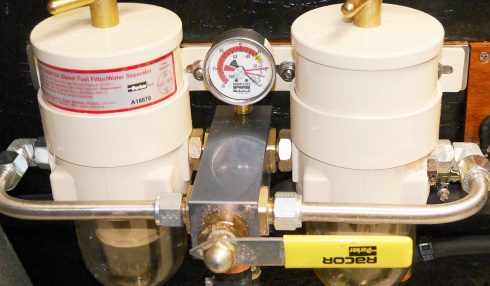AMEL 50 – Technical choices in detail
A new manufacturing process: vacuum infusion
Another innovation for this new AMEL is the manufacturing process. The hull is now built in vacuum infusion molding and a PVC foam sandwich reinforces the upperworks. The infusion technique, also used in aeronautics, allows to accurately measure the resin quantity, and to spread it homogeneously in the fiberglass. This new process allows to build a strong but lighter hull. It also has an industrial advantage: A new law of January 2017 forces French manufacturers to reduce their styrene emissions, which only the infusion technique can efficiently control.
The hull bottom remains monolithic, ensuring resistance against collision. It means that only fiberglass layers are laminated, without any foam or wood. The upperworks are built in sandwich with a PVC foam core between the fiberglass layers, which offers both insulation and light weight.
The twin-rudder solution
The choice of the twin-rudders is a premiere at AMEL. While enhancing steering sensations and sailing performance, this technical solution is also bound to the aft hull shape. Indeed, with such a large and flat aft, a traditional central rudder would represent a significant risk of stall. While heeling, a wide and flattened hull regularly has its central part out of the water. Air may then leak out along the rudder head, inducing a loss of efficiency and control. The technical solution to this issue is the twin-rudder system. When heeling, the leeward rudder is both perfectly vertical and immersed at the lowest point of the hull. The use of pull-pull mechanical cables makes the steering perfectly reactive and sensitive.
This type of low-draft rudder is also an advantage in Mediterranean marinas, where waters near the docks are sometimes shallow.
Another new specification: these rudders are compensated. It simply means that the rudder stock is no longer above the leading edge of the rudder, but a little further back. When rotating, the front part of the rudder compensates the force applied by the water on its rear part. The force required to maneuver this blade is therefore lower, while the control and feeling at the steering wheel are very accurate. In addition, the rudder stocks are located in the watertight rear locker. In the event of an impact on a rudder causing waterway, the buoyancy of the boat is not questioned, and the remaining rudder keeps the steering function available until a shelter.

Propeller shaft and engine
AMEL 50 will be the smallest of our current boat range. Its keel is also thinner and does not allow to house technical parts such as a water tank or a transmission system, hence the choice for a traditional propeller shaft. The main engine on the AMEL 50 will be a 110 HP Volvo D3.

Stern and bathing platform
An extensive research has been made on the stern design. The swim ladder is integrated in the platform, allowing an easy and fast implementation. Custom-made composite davits will be proposed and will perfectly suit the lines of the boat. They will allow to carry a nice dinghy, essential to offshore programs.
The side steps on the back of the deck lower the freeboard on this part of the boat and facilitates the access to the sea. It also enlarges the rear window of the aft cabin and allows to integrate harmoniously the davits in the boat’s figure.
The large waterproof rear locker is essential on a blue-water cruiser and is maintained on the AMEL 50. It will receive all the outdoor equipment needed for life at sea.






